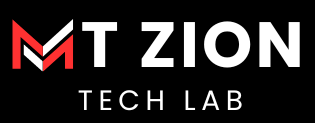In today’s data-driven world, businesses are constantly seeking innovative ways to reach their target audience and drive growth. While compelling content is key, the power of content formatting often gets overlooked. But what if you could leverage machine learning (ML) to optimize your content formatting for maximum impact?
This article dives into the exciting intersection of machine learning and content formatting, revealing how businesses can gain a significant advantage. We’ll explore:
- The Science Behind Content Consumption: How users engage with different formatting elements
- Unlocking Insights with Machine Learning: How ML analyzes data to predict optimal formatting
- Optimizing Content for Engagement and Conversions: Putting machine learning insights into action
The Science Behind Content Consumption
Understanding how users interact with content is crucial for optimizing its formatting. Here are some key aspects to consider:
- Headings & Subheadings: Clear headings break up text, improve readability, and guide users through the content.
- Bullet Points & Lists: Lists make complex information easier to digest and visually appealing.
- Images & Videos: Visual content grabs attention, improves comprehension, and increases engagement.
- Text Length & White Space: Shorter paragraphs with ample white space make content less intimidating to read.
While these elements are essential, the optimal combination can vary depending on the content type, audience, and platform.
Unlocking Insights with Machine Learning
Machine learning can analyze vast amounts of user data, including behavior patterns and engagement metrics. This data can then be used to predict how users will respond to different formatting choices.
Here’s how ML can be applied to content formatting:
- A/B Testing at Scale: ML can automate A/B testing, analyzing user interactions with various formatting options to identify the most effective combinations.
- Predicting User Behavior: Machine learning algorithms can predict how users will engage with different formats based on factors like demographics and past behavior.
- Personalized Content Formatting: ML can personalize content formatting for individual users, tailoring it for optimal engagement based on their preferences.
Optimizing Content for Engagement and Conversions
By leveraging insights from machine learning, businesses can make data-driven decisions about content formatting:
- Tailoring Content to Specific Platforms: Optimize formatting for various platforms like social media, websites, or email newsletters based on user behavior on each platform.
- Improving Content Readability: Use ML insights to ensure proper heading hierarchy, text length, and white space for optimal readability across devices.
- Boosting User Engagement: Strategically incorporate images, videos, and other visual elements based on predicted user preferences for each content type.
- Driving Conversions: Use ML to optimize formatting for content with conversion goals, like calls to action and landing pages.
Conclusion: The Future of Content is Data-Driven
Machine learning represents a powerful tool for businesses to unlock the true potential of content formatting. By harnessing data and leveraging ML insights, businesses can create content that resonates with their audience, drives engagement, and ultimately fuels growth.
Ready to unleash the power of data-driven content formatting?
Start by experimenting with A/B testing and analyzing user behavior data. As machine learning becomes more accessible, businesses can integrate it into their content creation process to stay ahead of the curve and deliver consistently high-performing content.

